From the historic town of Uchiko in Ehime, the Omori family carries on a six-generation legacy of traditional warosoku candle-making. Father Taro and his son Ryotaro continue this rare craft using methods preserved since the Edo period, bridging past and present.
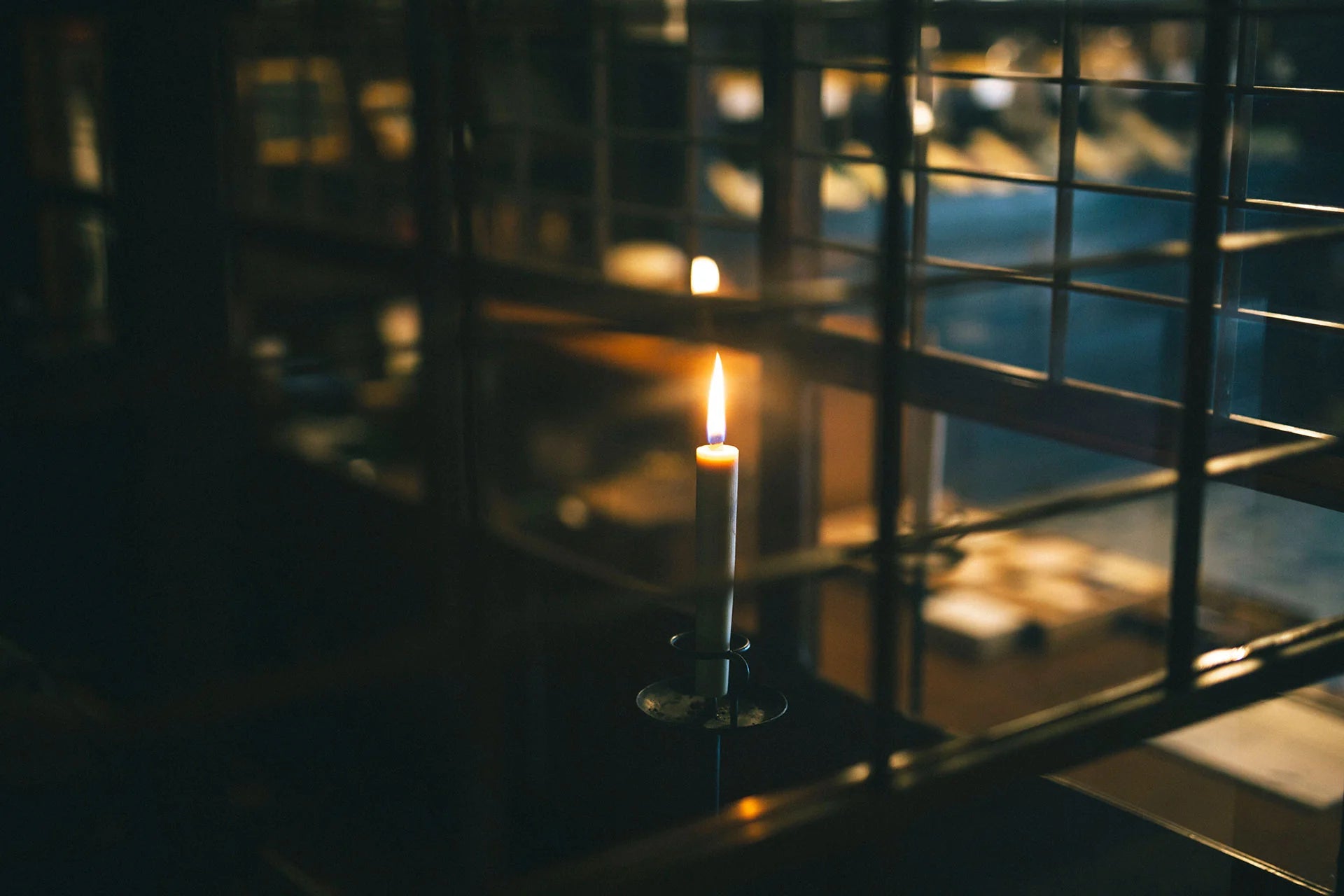
What are "Warosoku"
Warosoku are traditional Japanese candles made using natural materials and time-honoured techniques passed down for generations. Each candle is carefully crafted by hand, starting with a wick made from washi paper and reed, then layered with wax from the haze tree. This slow, thoughtful process gives the candles their signature gentle flame and soft, flicker-free glow. Made by skilled artisans like the Omori family in Ehime Prefecture, every candle reflects patience, care, and a deep respect for nature and tradition.
Crafting Warosoku
A look into the careful process behind these traditional Japanese candles.
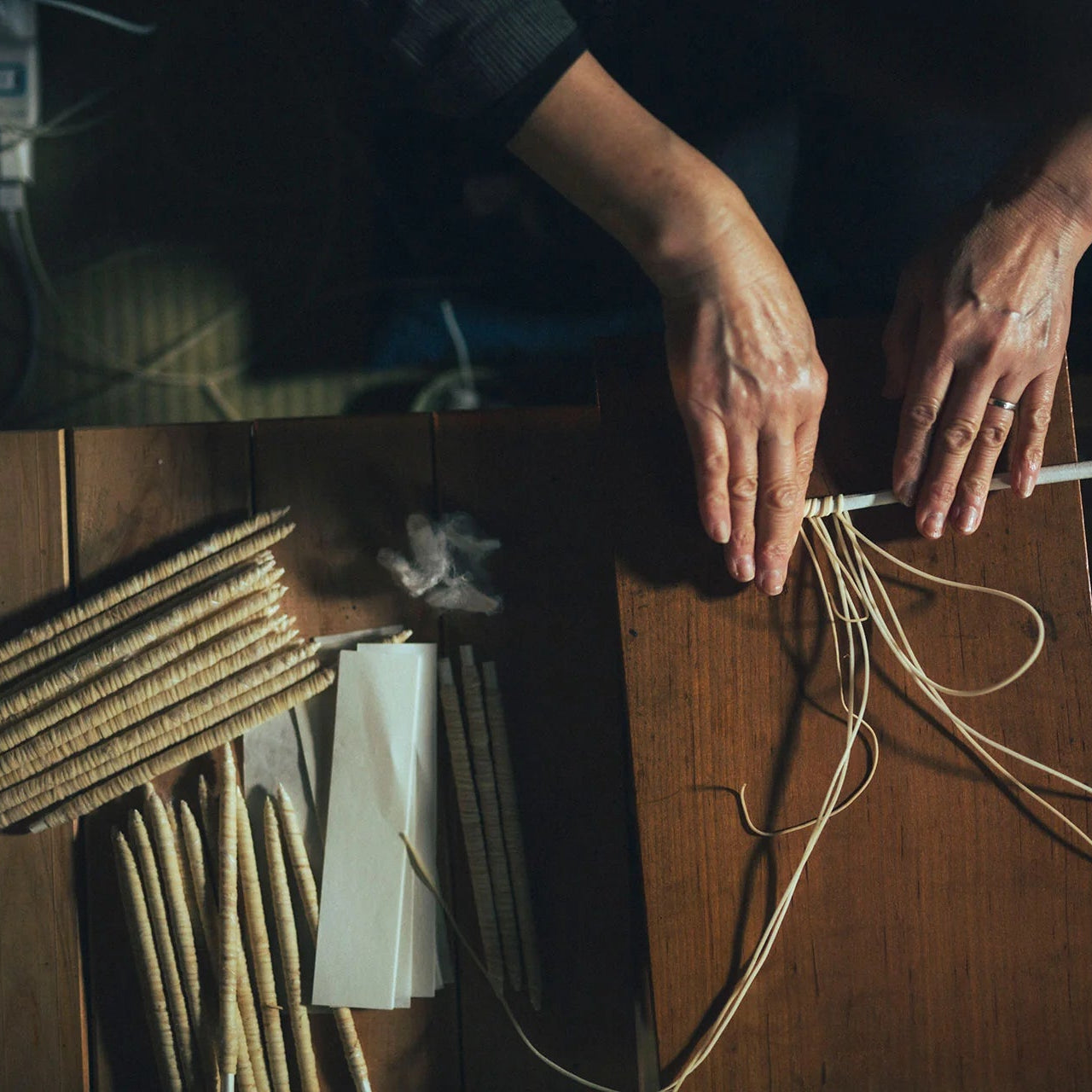
Wick Making – 灯芯づくり
The wick is prepared to begin the wax-coating process. Washi paper and the pith of igusa grass are carefully wrapped around a bamboo skewer, then secured with silk floss. All materials used are naturally sourced.
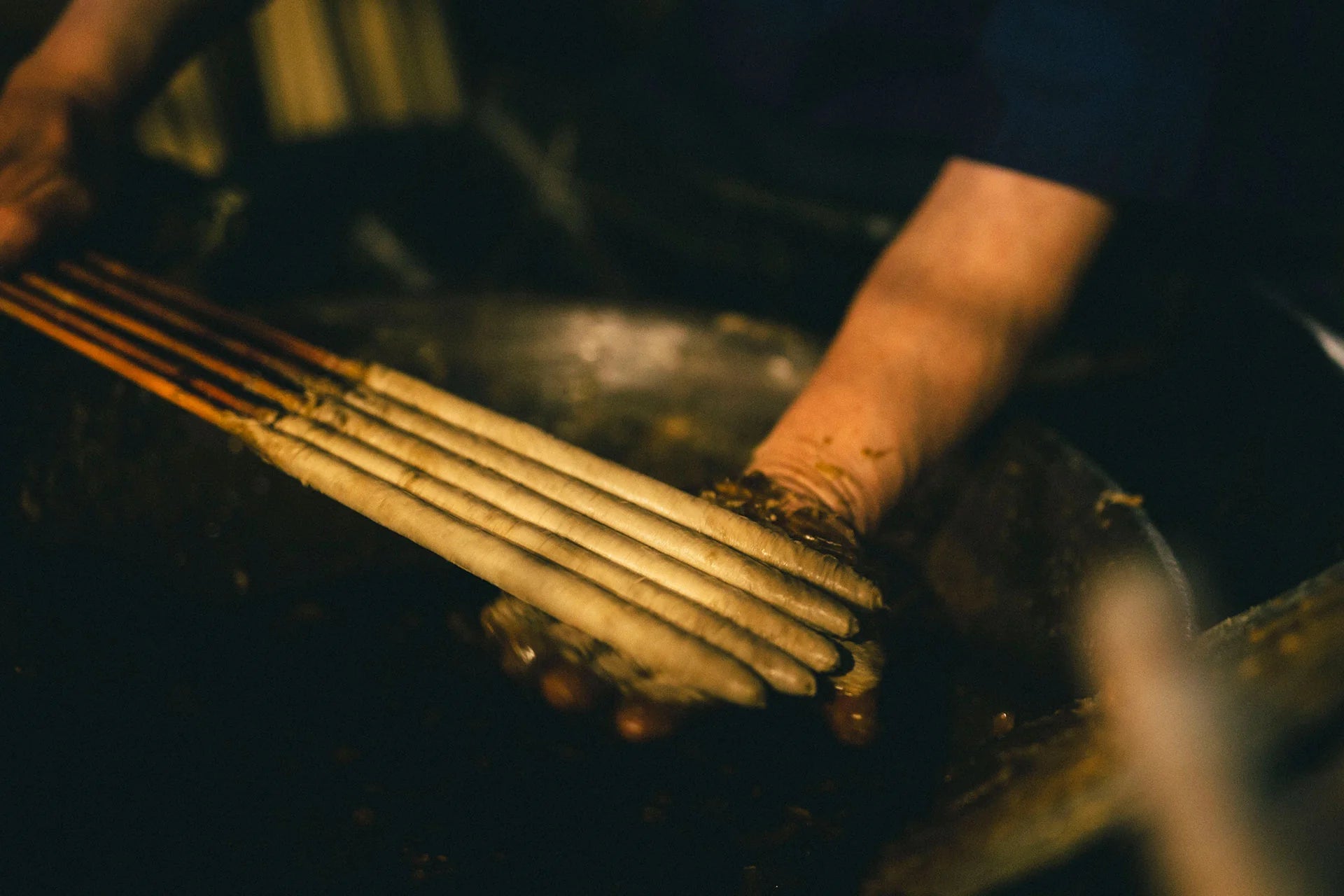
Layering Wax – 生掛け
Warm wax, melted to around 40–45°C, is scooped up by hand and gently rubbed onto the wicks, five or six at a time, while rolling them in the palm. The process of applying wax, letting it dry, and repeating is done many times—gradually building up the candle’s shape and thickness.

Polishing – ツヤ出し
Using the friction of the palm, the surface of the candle is gently polished to bring out a soft sheen. The key is not to make it overly glossy — subtle vertical lines are intentionally left behind. Since the wax is plant-based, a texture reminiscent of natural wood is carefully preserved.
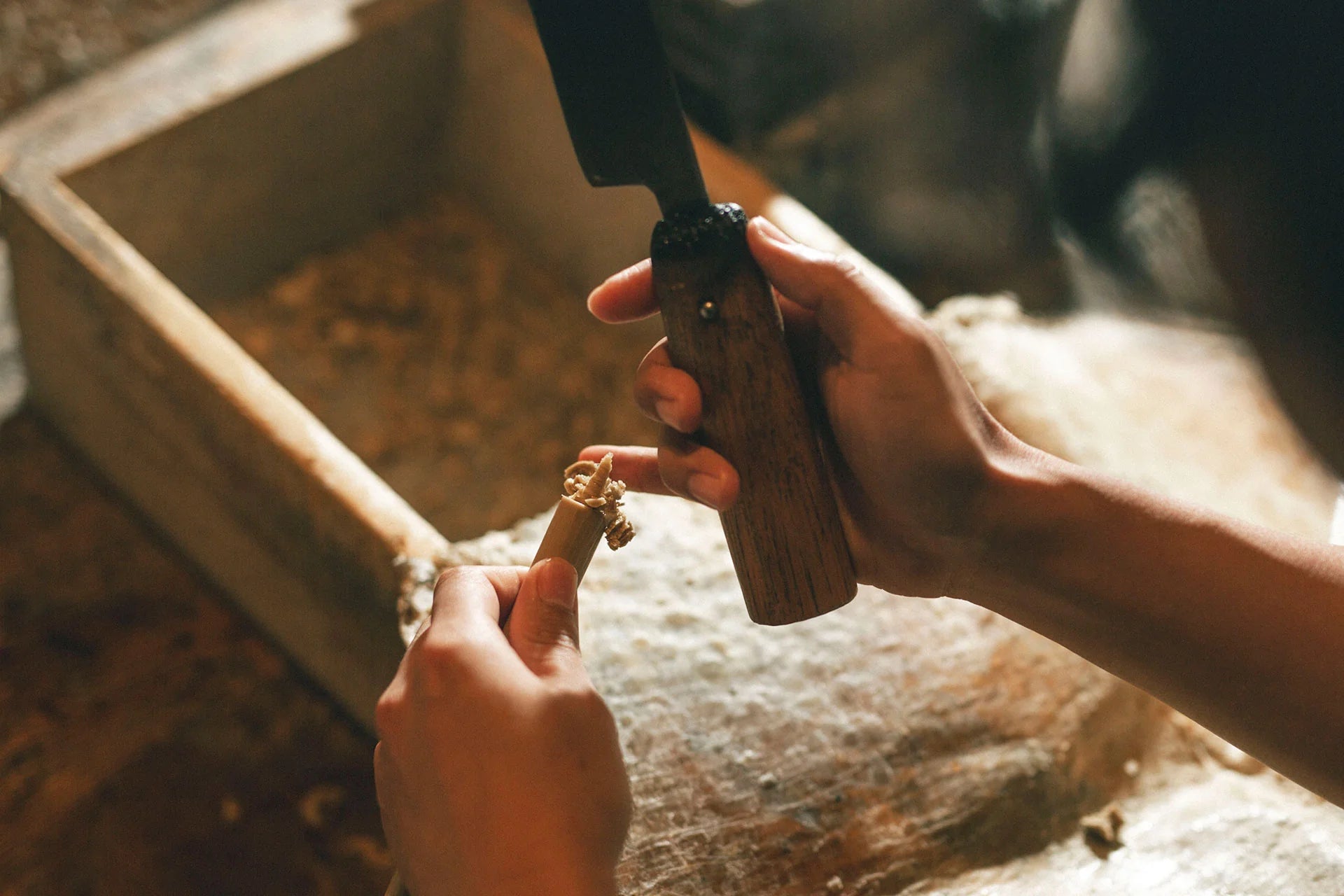
Wick Trimming – 芯出し
This step prepares the wick for lighting. The top part of the candle is gently warmed inside a charcoal-heated chamber called a muro. Once the wax softens slightly, a heated iron tool is used to carefully trim the wick without cutting it off completely.
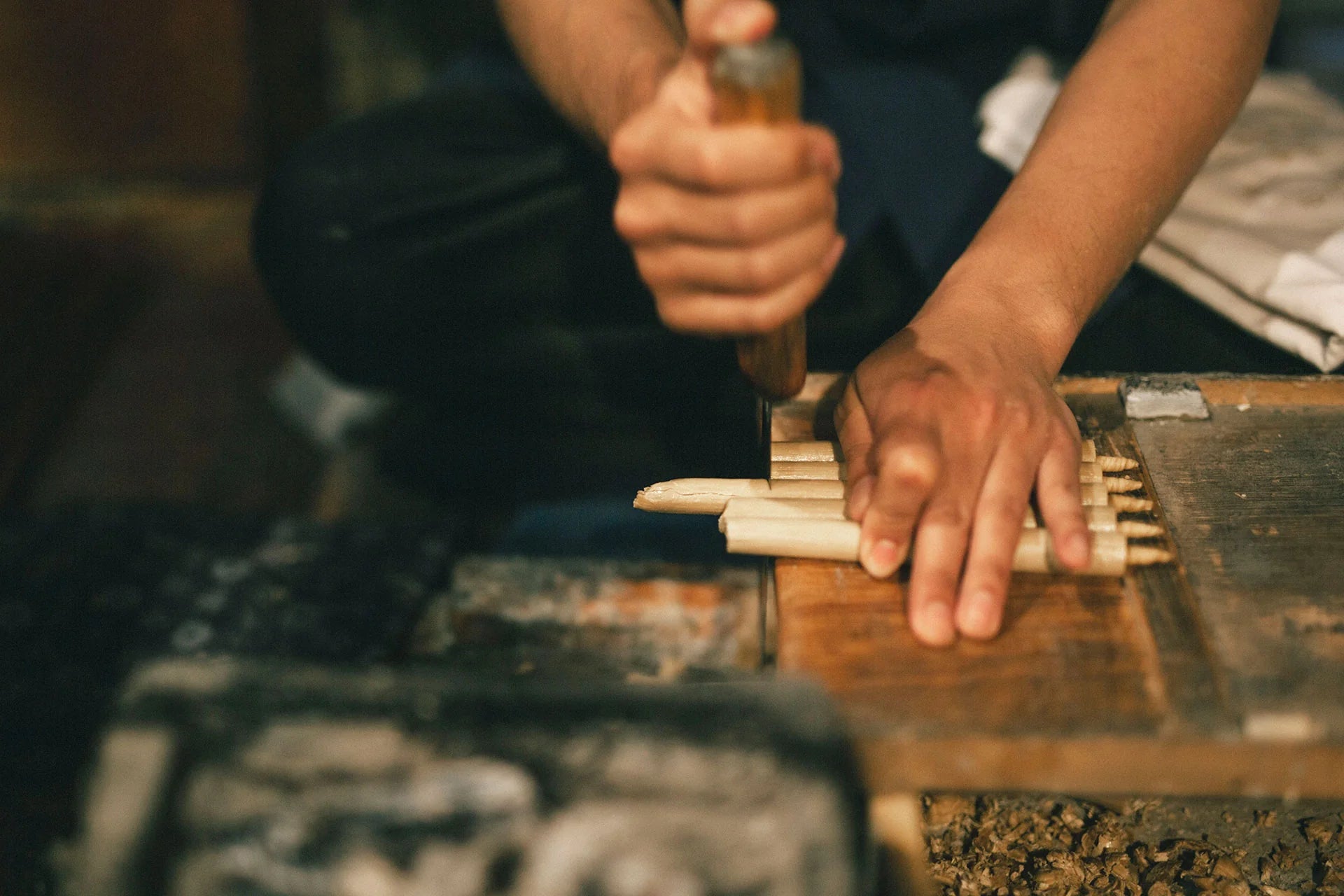
Trimming - 切り揃え
Because each candle is handmade, the wick lengths can vary. To ensure uniformity, this step involves trimming the wicks evenly using a heated iron tool. Any trimmed pieces are melted down and reused.

Completion - 完成
When viewed from above, the finished candle shows many rings that look like tree growth rings. These form naturally from the repeated layering of wax. The candle has a gently rounded top and is finished with a soft, pale green tint.
MATERIALS BEHIND WAROSOKU

Sumac Berries (ハゼの実 / Haze no Mi)
The wax for warosoku comes from the berries of the haze tree, a type of sumac native to Japan and part of the lacquer tree family. It is believed the haze tree was brought to Japan from the Ryukyu Islands around the Edo period. In Uchiko Town, a traditional work song called the “Haze Picking Song” still remains, reflecting the hard work involved in harvesting these berries.

Japan Wax (木蝋 / Mokurou)
Japan wax is extracted by steaming and pressing the berries of the haze tree, a type of Japanese sumac. In traditional candle making, the unrefined form known as kirou (生蝋) is used. Compared to beeswax or paraffin, kirō has a lower melting point, requiring careful temperature control throughout the process.

Wick (灯芯 / Toshin)
The wick forms the core of each candle and is made entirely by hand. Washi paper, igusa pith, bamboo, and silk floss are all naturally sourced. Even the silk floss, used to keep the wrapped igusa securely in place, is prepared in-house - beginning with the boiling of silkworm cocoons.
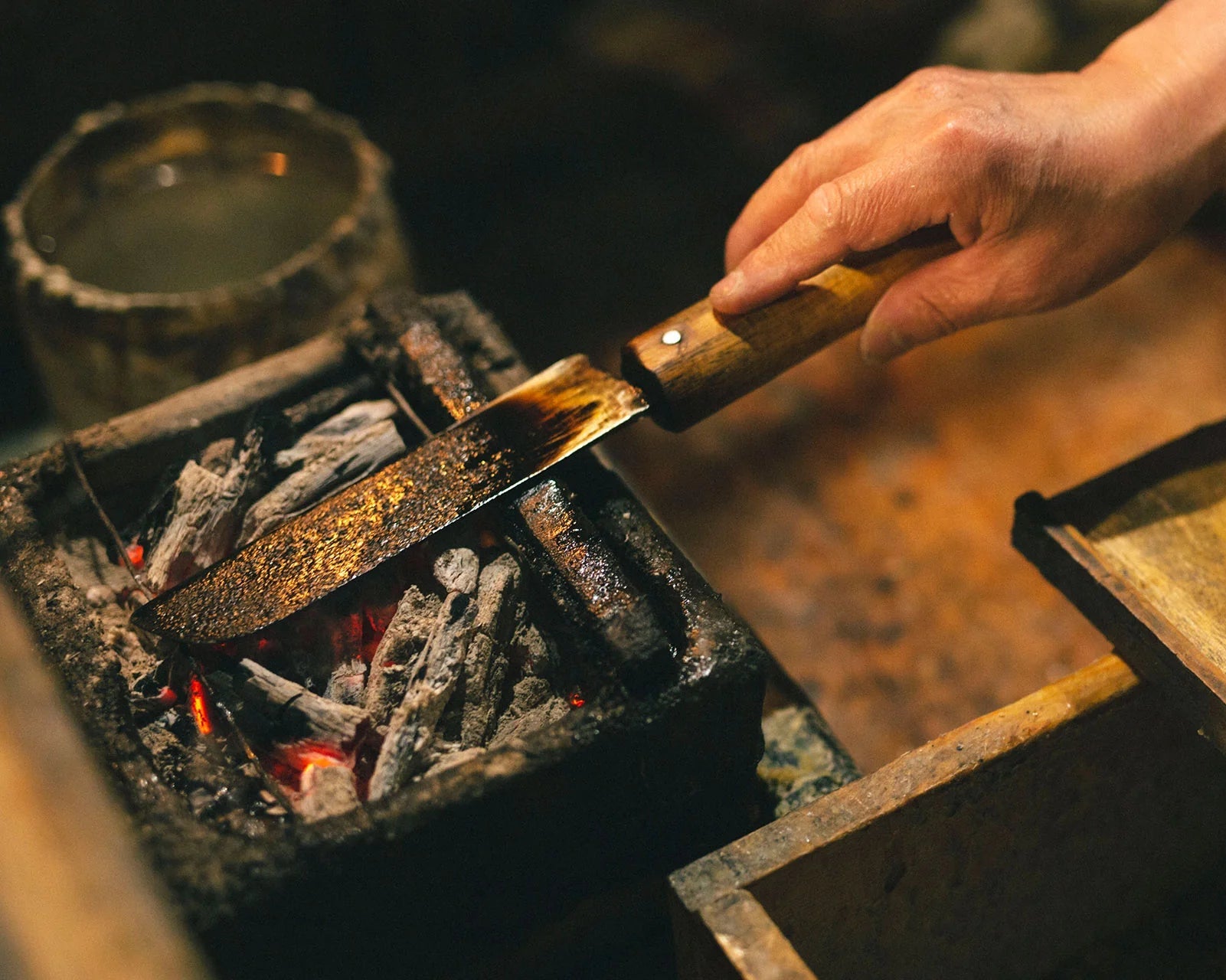
Charcoal – (木炭 / Mokutan)
Charcoal fires supply the heat needed to melt the solid raw wax (kirou) and warm the iron tools and drying chamber. For generations, local charcoal has been used with care, moving it carefully throughout the process to maintain the right temperature.

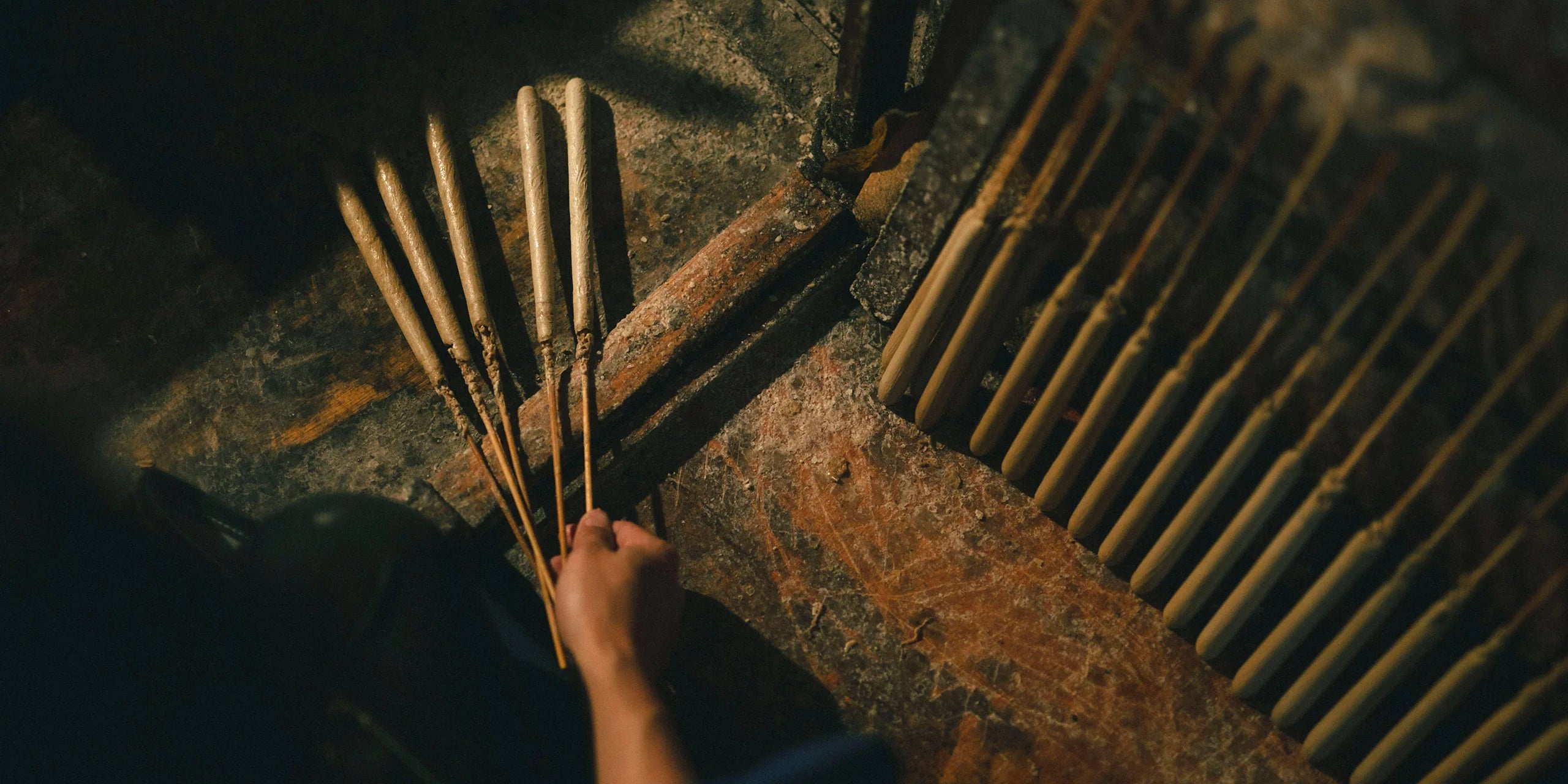
![Japanese Sumac Wax Candles [14cm] - Set of 2](http://tokaceramics.com.au/cdn/shop/files/OmoriWarosoku14cmsetof2-TokaCeramics_2a674bf5-afbb-4268-9dfd-b373175ec00f.jpg?v=1754106712&width=900)
![Japanese Sumac Wax Candles [14cm] - Set of 2](http://tokaceramics.com.au/cdn/shop/files/OmoriWarosoku14cmsetof2-TokaCeramics.webp?v=1754106712&width=900)


![Japanese Sumac Wax Candles [12cm] - Set of 6](http://tokaceramics.com.au/cdn/shop/files/OmoriWarosoku12cmsetof6-TokaCeramics.jpg?v=1754105721&width=2048)
![Japanese Sumac Wax Candles [12cm] - Set of 6](http://tokaceramics.com.au/cdn/shop/files/image_900x_a5ba72a1-bcb2-44bb-8dbe-53b30ad2f64b.webp?v=1754105721&width=900)